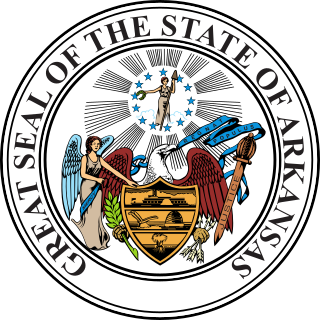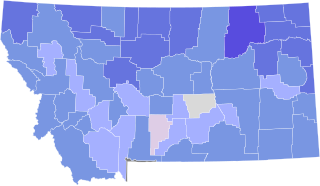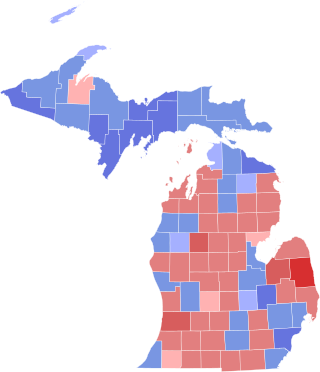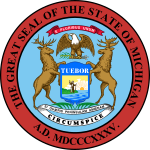
The 1978 United States Senate elections were held on November 7, in the middle of Democratic President Jimmy Carter's term. The 33 seats of Class 2 were contested in regular elections. Special elections were also held to fill vacancies.

The 1972 United States Senate elections were held on November 7, with the 33 seats of Class 2 contested in regular elections. They coincided with the landslide re-election of Republican President Richard Nixon. Despite Nixon's landslide victory, Democrats increased their majority by two seats. The Democrats picked up open seats in Kentucky and South Dakota, and defeated four incumbent senators: Gordon Allott of Colorado, J. Caleb Boggs of Delaware, Jack Miller of Iowa, and Margaret Chase Smith of Maine. The Republicans picked up open seats in New Mexico, North Carolina, and Oklahoma, and defeated one incumbent, William B. Spong Jr. of Virginia.

The 1970 United States Senate elections was an election for the United States Senate. It took place on November 3, with the 33 seats of Class 1 contested in regular elections. Special elections were also held to fill vacancies. These races occurred in the middle of Richard Nixon's first term as president. The Democrats lost a net of three seats, while the Republicans and the Conservative Party of New York picked up one net seat each, and former Democrat Harry F. Byrd Jr. was re-elected as an independent.

The 1964 United States Senate elections were held on November 3. The 33 seats of Class 1 were contested in regular elections. Special elections were also held to fill vacancies. They coincided with the election of President Lyndon B. Johnson by an overwhelming majority, to a full term. His Democratic Party picked up a net two seats from the Republicans. As of 2023, this was the last time either party has had a two-thirds majority in the Senate, which allowed the Senate Democrats to override a veto, propose constitutional amendments, or convict and expel certain officials without any votes from Senate Republicans. However, internal divisions would have prevented the Democrats from having done so. The Senate election cycle coincided with Democratic gains in the House in the same year.

The 1960 United States Senate elections coincided with the election of John F. Kennedy as president on November 8, 1960. The 33 seats of Class 2 were contested in regular elections. A special election was also held on June 28, 1960, for a mid-term vacancy in North Dakota where Democrats flipped a seat to expand their majority to 66–34. As Majority Leader Lyndon Johnson was elected Vice President, Mike Mansfield became the new majority leader.

The 1988 United States Senate election in Michigan was held on November 8, 1988. Incumbent Democratic U.S. Senator Don Riegle won re-election to a third term. Despite George H. W. Bush’s landslide victory in Michigan and the rest of the country, Riegle’s margin of victory increased from the previous one.

The 1944 United States Senate election in Arkansas took place on November 7, 1944. Incumbent Senator Hattie Caraway ran for a third term in office, but was eliminated in the Democratic primary. U.S. Representative J. William Fulbright defeated Governor Homer Martin Adkins in the Democratic runoff.

The 1932 United States Senate election in Indiana took place on November 8, 1932. Incumbent Republican Senator and Senate Majority Leader James E. Watson ran for a third term in office, but was defeated by Frederick Van Nuys in a landslide.

The 1930 United States Senate election in Montana took place on November 4, 1930. Incumbent United States Senator Thomas J. Walsh, who was first elected to the Senate in 1912, and re-elected in 1918 and 1924, ran for re-election. He won the Democratic primary unopposed, and faced Montana Supreme Court Associate Justice Albert J. Galen, the Republican nominee, and several independent opponents in the general election. Ultimately, Walsh defeated his opponents in a landslide and won his fourth and final term in the Senate.

The 1930 United States Senate election in Montana took place on November 3, 1936. Incumbent United States Senator James E. Murray, who was first elected to the Senate in a special election in 1934, ran for re-election. He narrowly emerged from a competitive and close Democratic primary, wherein he was challenged by United States Congressman Joseph P. Monaghan, who represented Montana's 1st congressional district. In the general election, Murray was opposed by Thomas O. Larson, a State Senator and the Republican nominee, and Monaghan, who, after losing the primary, ran as an independent candidate. Murray ended up winning a second term, and his first full term, in a landslide, defeating both of his opponents by a comfortable margin.

The 1938 United States Senate election in Ohio took place on November 7, 1938. Incumbent Senator Robert J. Bulkley ran for re-election to a second full term in office, but was defeated by the Republican nominee, former state Senator Robert A. Taft, the elder son of former President and supreme court chief justice William Howard Taft. Taft's victory was a part of a major Republican wave nationally, where Republicans gained 8 Senate seats and 81 seats in the House of Representatives, which was largely attributable to incumbent Democratic President Franklin Roosevelts's unpopularity in the aftermath of the Recession of 1937–1938 and the President's controversial plan to add more seats to the Supreme Court, which he proposed after the court ruled some of his New Deal programs unconstitutional. Taft's victory marked the beginning of 4 consecutive Republican victories in this seat, and Democrats would not win it again until Governor Frank Lausche won it in 1956.

The 1928 United States Senate election in Delaware took place on November 6, 1928. Incumbent Republican U.S. Senator Thomas F. Bayard Jr. ran for a third term in office, but was defeated by former Republican Governor John G. Townsend Jr. in a landslide.

The 1924 United States Senate election in Michigan was held on November 4, 1924. Incumbent Republican U.S. Senator James J. Couzens, who was appointed following the resignation of Truman Newberry, was elected to a full term in a landslide. He also won the concurrent special election to serve out the remainder of Newberry's term.

The 1930 United States Senate election in Oklahoma took place on November 4, 1930. Incumbent Republican Senator William B. Pine ran for re-election to a second term. In the Democratic primary, former U.S. Senator Thomas Gore emerged victorious in a crowded Democratic primary that included three former governors and one of the first female candidates for statewide office. Gore won a slim plurality in the initial election, and defeated C. J. Wrightsman, an oilman from Tulsa, in the runoff by a wide margin. In the general election, aided by the national Democratic landslide, Gore narrowly defeated Pine, returning to the Senate for one final term.

The 1930 United States Senate election in Iowa took place on November 4, 1930. Incumbent Democratic Senator Daniel F. Steck ran for re-election to a full term in office, but was defeated by U.S. Representative Lester J. Dickinson.

The United States Senate election of 1934 in New Jersey was held on November 6, 1934.

The 1936 United States Senate election in Michigan was held on November 3, 1936. Incumbent Republican U.S. Senator James J. Couzens ran for re-election to a third term in office, but was defeated in the Republican primary by Governor Wilber Brucker. Brucker was defeated in the general election by Democratic U.S. Representative Prentiss M. Brown, becoming the first Democrat to win this seat since 1853.

The 1972 United States Senate election in Michigan was held on November 7, 1972. Incumbent Republican U.S. Senator and Senate Minority Whip Robert P. Griffin ran for re-election to a second term, won reelection defeating the Democratic candidate, and Michigan Attorney General Frank J. Kelley by 6%. Despite President Richard Nixon’s landslide victory in Michigan and the rest of the country, Griffin’s margin of victory decreased from the previous election.
The 1948 Massachusetts general election was held on November 2, 1948, throughout Massachusetts. Primary elections took place on September 14.
The 1946 Massachusetts general election was held on November 5, 1946, throughout Massachusetts. Primary elections took place on June 18.





















